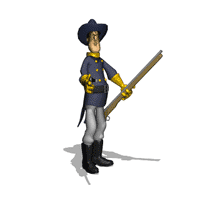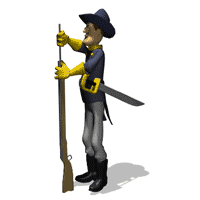The
Higginbotham Brothers of East Texas
THE HOME FRONT
A collection of anecdotal stories and a few letters
of the Higginbotham family during WWII.
Photographs & letters courtesy of Maurice Higginbotham
Thunderbolts Over
Houston
While Merrion Higginbotham was finishing his P47 training in Victoria, he
did what quite a few Texas pilots did when they got a chance. He buzzed the
family house with his plane. Since he had advance notice of a flight, he was
able to write a letter to the family and tell them what to expect - sort of.
He "got permission" to slip away from his group of P47s and by following
landmarks, he was able to fly over the house. Maurice had been waiting all
morning on the front steps. Merrion buzzed them twice. Once to make sure
they had enough time to come outside and on the second pass he flew - not
over the Higginbotham house, but the one next door - so they would be able
to see him clearly. Mauice said it was just for a few seconds, and he
wouldn't have recognized his face had he not been expecting him.


Murphy and Milton on
leave
Two of the Higginbotham brothers imitate Mussilini and Hitler (with a black
hair comb held to resemble Hitler's moustache)
Photo Courtesy Maurice Higginbotham
Milton and Marvin
Milton's Story
"Milton
joined the Navy December 14, 1942 at the age of 17. He trained as a radioman
in San Diego, and was assigned to Carrier aircraft Service Unit #8. He
remained in the states for most of his service time.
He was sent on the shakedown cruise of the new escort aircraft carrier
Bismark Sea. The 10,200 ton carrier was later sunk about 30 miles off the
coast of Iwo Jima by a Japanese aerial attack on February 21, 1945. This
ship received two mortal hits. The Japanese pilots strafed and killed 100 of
the men, as they struggled helplessly in cold mountainous seas. There were
more than 300 casualties, including the men shot in the water. Survivors
told of the merciless strafing by the Japanese pilots of swimmers near the
sinking carrier.
After the war, he went to the same Morse school that his brother Maurice
later attended and became a telegrapher with the railroad. Milton was also a
gifted cartoonist and draftsman. He died in Houston at the age of 40."

Ulick the Cow
Photo Courtesy Maurice Higginbotham
The Mascot
An angel was the
mascot of the squadron, and a Major Thorne had an angel painted on the nose
of his plane, urinating.
Fighter planes were equipped with a urinal in front of the pilot's seat that
drained out the bottom of the plane. As you can imagine, this was a
necessity on long missions. Anyway, the Major claimed that he had "pissed
all over Germany".
In this photo Merrion stood right under the stream, so it would look as
though it was hitting his hat.
Letters - next page

The Mascot
Photo Courtesy Maurice Higginbotham
Murphy's Wounds
Murphy was
wounded when a German 88 mm. artillery shell exploded close to his position.
The same shell killed three men, and wounded several more. Shrapnel hit
Murphy in three places. One went completely through his right leg at the hip
and exited on the inside of his leg, barely missing his "vital parts".
Another piece of shrapnel hit him in his upper right shoulder (the one he
mentions in one of his letters) The third piece of shrapnel entered the left
side of his back.
Ulick the Cow
Maurice explains
that the cow was named for the time when he (Maurice) was held up to the
fence when he was just learning to speak. His arm was held over the wire and
the cow would lick his hand. "You lick" was what Maurice was saying to the
cow and that became her name.
Before entering the army, one of Murphy's chores had been to milk Ulick, the
family cow.
In the photo above Murphy took time out on leave (in dress uniform) to keep
in practice while Mother Higginbotham (Ida) supervises.
Maurice said that while milking Ulick, Murphy would squirt him with a stream
of milk and then apologize. He'd tell him to come over and then he'd squirt
him again. After swearing he'd never, ever do it again, he'd coax Maurice
over and squirt him a third time. Maurice said that after the third time he
got wise

Ulick the Cow
Photo Courtesy Maurice Higginbotham
Maurice remembers
Marvin
"Marvin was one
of the most generous people I have ever known. In 1945, when I was eleven
years old, he bought me a used 12 gauge shotgun and a whole case of shells
for it, a .22 rifle, and an old 1888 model 45-70 Winchester army rifle. That
was remarkably generous of him, as he was only making about $30.00 a month."
"My friends and I used to go hunting together in the nearby woods, and shoot
snakes in Halls Bayou north of Little York Road. We really enjoyed the
outdoors. Believe it or not, we found a saltwater crab in that bayou. I
never figured how he got that far up into a fresh water bayou. Maybe someone
threw him in alive. I really regret that I traded that old Winchester. It
was obsolete even then and impossible to find ammunition for, but now they
are found only in museums."
"Marvin was the best pistol, rifle and shotgun marksman that I have ever
seen. Once, while he was home on leave, I saw him shoot the tail feathers
off of a rooster with a .22 caliber revolver at about 25 feet. The rooster
was presenting a side view near our old outhouse out back. Although, he
clipped the feathers short, he never touched the rooster, and the bird never
realized what happened to his feathers; he just kept pecking away at the
chicken scratch. We lived in the country so there was no danger of hitting
anyone or damaging property."

The Higginbotham
brothers
Photo Courtesy Maurice Higginbotham
Maurice and Edna
Higginbotham
Easter c. 1948 Maurice
and Edna (too grown up for such foolishness) reluctantly pose with
"children". Incidentally - the house buzzed by Merrion was the house that
Edna Pierce would later move into - making her the "girl next door" that
Maurice would later marry.
Story of Marvin
The oldest brother
Marvin also was not sent overseas. He was kept in the States because he was
considered "old" at the time (about 25 years old). He spent most of his time
as a rifle instructor and working in the ordinance depot, repairing
firearms.
Marvin joined the Army the first time on May 7, 1937 during the Great
Depression. He was also assigned to the Second Infantry Division, 12th Field
Artillery at Fort Sam Houston. The Artillery pieces then were still
horse-drawn, but were motorized in time for World War II.
After he was discharged from the Army, he re-enlisted in the Army Air Corps
and served at times as a rifle instructor and a tail gunner on a B-17 Flying
Fortress. On one of his training missions over an Air Force gunnery range
near the Texas Coast, he described the following incident:
"We were flying splash missions with our .50 caliber machine guns. A
splash mission is where we would shoot a short burst of machinegun fire into
the water, and wait a few seconds and try to hit the first splash. That took
some practice to do, as the big bomber was traveling a few hundred mph. That
meant you had to allow for the speed, and altitude and aim behind the first
splash to hit it.
Of course, being a tail gunner I could only see behind the plane, and just
as I let go with a burst of machinegun fire, I saw the bullets rake across
the deck of a schooner, whose owner had entered the restricted gunnery zone.
A few seconds later, I could see the prop-wash behind the boat as it's
captain decided he'd better get the Hell out of there, and fast."

Marvin
Photo Courtesy Maurice Higginbotham

Milton
Photo Courtesy Maurice Higginbotham

Maurice and Edna
Higginbotham
Photo Courtesy Maurice Higginbotham










